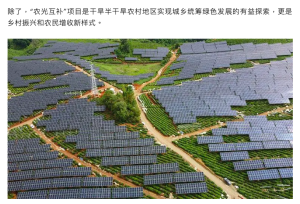
agricultural photovoltaic complementarity
The so-called 'agricultural photovoltaic complementarity' is a new model of industrial collaborative green development that comprehensively utilizes land in a three-dimensional manner, generates electricity from photovoltaic panels above, and takes into account agricultural production below, without changing the nature of the land. Agricultural photovoltaic complementarity, as an innovative agricultural development model, lies in the organic integration of photovoltaic power generation and agricultural production.
Specifically, it refers to the construction of solar photovoltaic power generation systems on agricultural land resources, while using photovoltaic panels to provide suitable growth environments for crops, edible fungi, and livestock breeding, thereby achieving three-dimensional value-added utilization of land. This model not only improves the efficiency of land use, but also promotes the integrated development of agriculture and new energy industries, opening up new paths for the diversified development of rural economy.
According to data, under the same soil fertility conditions, the innovative agricultural photovoltaic complementary mode can achieve a yield increase of 0.4% to 4.5% compared to the control group; We have achieved a win-win situation for both wheat production and photovoltaic efficiency.
The "Agricultural Photovoltaic Complementary" project is a beneficial exploration for achieving coordinated green development between urban and rural areas in arid and semi-arid rural areas, and is also a new style for rural revitalization and increasing farmers' income.
- Log in to post comments
